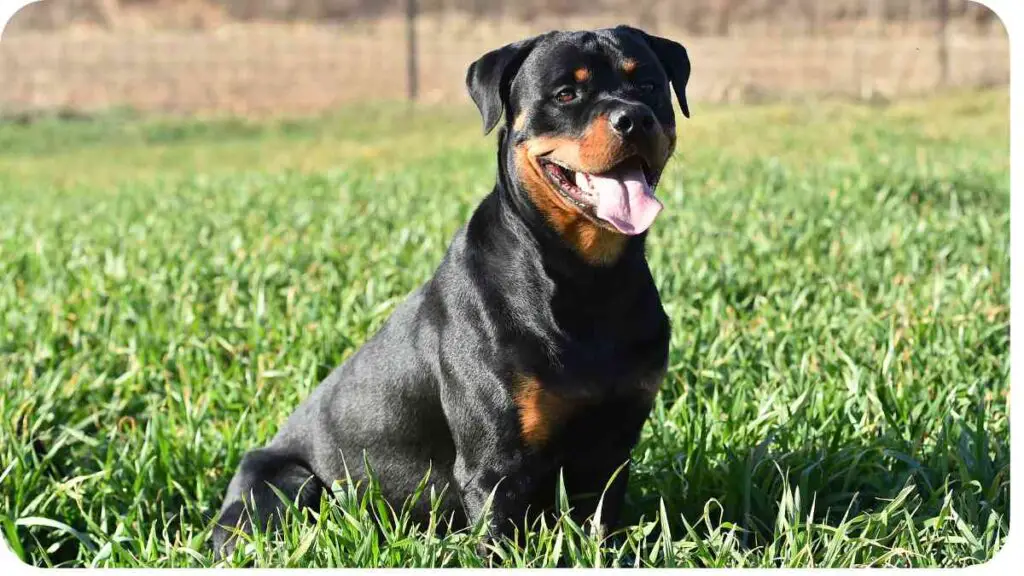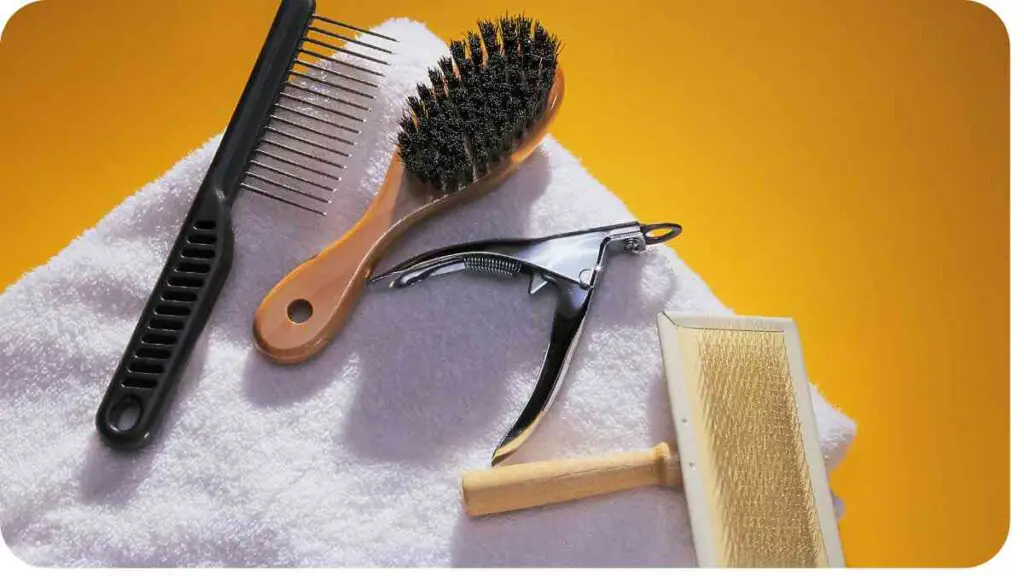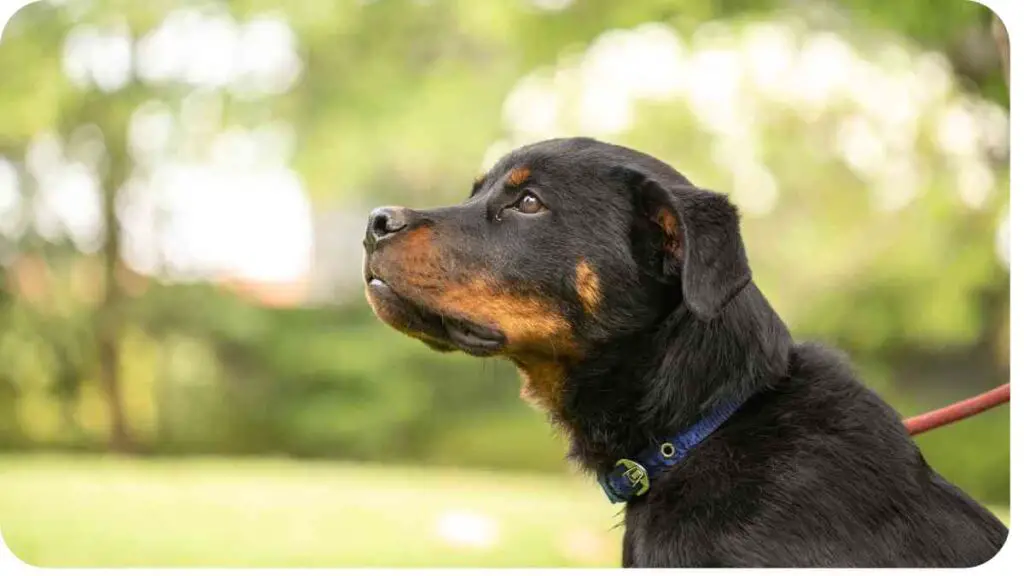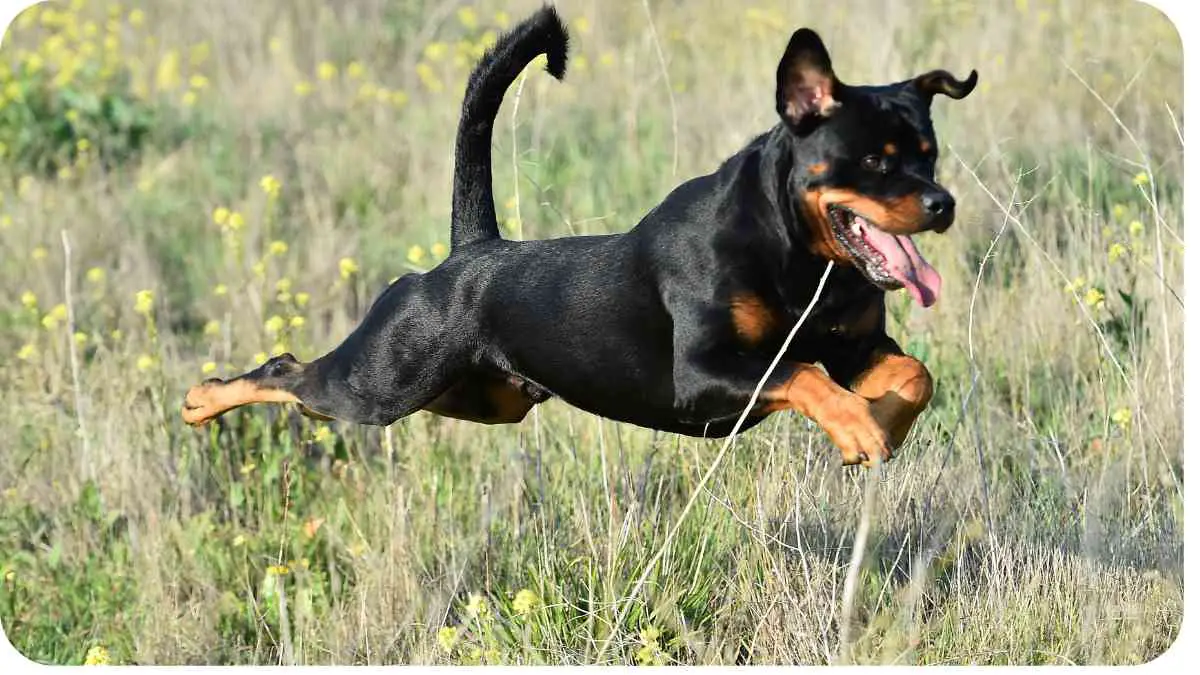Rottweiler fur is often misunderstood, with many believing it to be coarse and rough. In reality, Rottweiler fur can vary, ranging from soft and velvety to coarse and dense. Factors such as genetics, diet, grooming, and overall health play crucial roles in determining the texture of a Rottweiler’s fur.
Understanding these factors can help owners better care for their Rottweilers’ coats, ensuring they remain healthy and soft. This article explores the texture of Rottweiler fur, factors that impact it, and tips for maintaining soft, healthy fur.
| Takeaways |
|---|
| Rottweiler fur texture can vary among individual dogs. |
| Some Rottweilers have soft and velvety fur, while others may have coarser fur. |
| Factors such as genetics, breeding, and grooming practices can influence the softness of Rottweiler fur. |
| Regular grooming and proper nutrition can contribute to maintaining healthy and soft fur in Rottweilers. |
| Consulting with experienced Rottweiler owners and professionals can provide valuable insights on fur care and maintenance. |
What Is Rottweiler Fur Like?

Rottweiler fur is characterized by its short, flat strands with a dense texture that’s somewhat coarse and very thick. Despite its thickness, the fur falls short in length compared to other breeds, making it ideal for warmer climates. Unlike some breeds, Rottweiler fur is straight and lacks curls or waves.
Although the coat may seem thick upon first glance, it’s surprisingly soft once you penetrate the outer layer. However, due to its dark coloration, ranging from light brown to black, Rottweiler fur tends to shed, necessitating regular professional grooming to minimize hair around the home.
When it comes to owning a Rottweiler, it’s important to consider their compatibility with children. Discover why Rottweilers are great with kids and how they can form lifelong bonds with them in our insightful article on Are Rottweilers Good with Kids.
Factors That Impact Rottweiler Fur
Genetics
Genetics plays a crucial role in determining the softness of a Rottweiler’s fur. If one or both parents have rough hair, it’s likely that their offspring will inherit this texture as well. Conversely, if both parents boast soft, smooth coats, their puppies are likely to follow suit.
Therefore, breeding from parents with desirable coat textures can influence the softness of future generations of Rottweilers.
| Factor |
|---|
| Genetics |
| Diet |
| Grooming Routine |
| Environmental Factors |
| Overall Health |
Diet
A Rottweiler’s diet significantly affects the texture of its fur. A diet rich in protein and fat, such as beef or chicken, can lead to thicker and softer coats. This is because protein and fat are essential for healthy skin and coat growth. In contrast, a grain-based diet, such as rice or corn, may result in less luxurious fur.
Moreover, Rottweilers on raw diets tend to have softer fur than those on canned or kibble foods. Raw meat provides essential vitamins necessary for healthy hair growth, contributing to softer strands. Therefore, paying attention to your Rottweiler’s diet can help maintain the softness and health of its fur.
Looking for a furry companion that makes a great house pet? Our comprehensive guide on Are Rottweilers Good House Pets explores the characteristics that make Rottweilers a wonderful addition to your home and family.
Health
The health of your Rottweiler directly affects the texture of its fur. A healthy dog typically has soft fur, while poor health can lead to changes in fur texture. Factors such as diet, stress, and underlying medical conditions like hypothyroidism or diabetes mellitus can impact the quality of your Rottweiler’s coat.
If you notice that your Rottweiler’s fur is coarse when it should be soft, it could be a sign of illness or injury. Changes in appetite, energy levels, or other symptoms like dry skin or hair loss should prompt a visit to the vet for a proper diagnosis and treatment.
Grooming

While Rottweiler fur may not be as soft as other coat types, regular grooming is still essential. Each dog’s coat varies based on hair amount and density. To groom your Rottweiler, use a rough brush or rake to remove dead hair, especially from the underside of the coat. If your Rottweiler has a long coat, scissors may be more suitable than clippers to avoid pulling out hairs.
When selecting shampoo or conditioner, opt for products designed specifically for dogs. These formulations are gentle on canine skin and help prevent tangling between grooming sessions. Avoid scented products, as Rottweilers are prone to allergies, which could be exacerbated by fragrances.
You should also avoid using anything scented if possible; since this breed tends toward allergies anyway (especially seasonal ones), adding fragrances into their bathing routine could cause them even more discomfort than usual!
Curious about Rottweilers and their tail appearance? Our article on Are Rottweilers Born with Tails shares valuable insights and personal experiences to shed light on this intriguing aspect of Rottweiler anatomy.
Age
As Rottweilers age, their fur tends to become softer and smoother. This change is attributed to the development of “guard hairs,” which are coarse and rough in younger dogs. Older dogs have had more time to grow these guard hairs, resulting in a softer coat texture.
Younger Rottweilers, still in the process of growing their guard hairs, may have a coat that appears thicker or rougher. However, as they mature into adulthood and their guard hairs fully develop, their coat will gradually become softer.
Climate/Weather Conditions
The climate and weather conditions in your area can impact the softness of your Rottweiler’s fur. Extreme temperatures, whether too hot or too cold, can lead to rough and dry fur due to a lack of moisture. Additionally, prolonged exposure to sunlight can damage the hair shafts, causing them to become stiff and rough over time.
Windy conditions can also contribute to rough fur, as static electricity may cause the fur to stand up straight instead of lying flat against the body. While Rottweilers are not born with naturally soft coats, factors such as climate can affect how soft their fur feels.
| Climate/Weather Conditions |
|---|
| Hot and Humid |
| Cold and Snowy |
| Rainy and Wet |
| Dry and Arid |
| Moderate and Temperate |
Stress/Emotional Health
Maintaining your Rottweiler’s emotional health and minimizing stress is crucial for their overall well-being, including the condition of their fur and skin. Stress can lead to various skin conditions and is a common cause of hair loss in dogs.
To help manage your Rottweiler’s stress levels, ensure they have a regular grooming schedule and brush them daily to reduce shedding and maintain a healthy coat. Providing plenty of exercise through walks and playtime can also help alleviate stress. Additionally, engaging your Rottweiler in training classes where they can interact with other dogs and learn new tricks can be beneficial for their mental stimulation and emotional health.
Are you a proud owner of a Rottweiler and wondering about their compatibility with little dogs? Discover how Rottweilers can get along with smaller canine companions in our informative piece on Are Rottweilers Good with Little Dogs and ensure a harmonious environment for your furry friends.
Breed Type/Size Differences

The breed and size of your dog can also affect the amount of fur they have. Generally, smaller dogs tend to have less fur than larger breeds. For example, German Shepherds are known for having more hair than smaller breeds like poodles or Chihuahuas.
Coat length is another factor that influences fur volume. Long-haired dogs naturally have more fur than those with short coats. This extra layer of protection provided by longer coats can help protect them from weather conditions and other elements.
Ultimately, the breed and coat length of your dog can impact how much fur they have, with long-haired breeds often having more fur than short-haired breeds.
| Breed Type | Size |
|---|---|
| American Rottweiler | Larger and bulkier |
| German Rottweiler | Smaller and more agile |
| European Rottweiler | Muscular and robust |
| Standard Rottweiler | Medium-sized |
| Miniature Rottweiler | Smaller and compact |
Training a Rottweiler can be a rewarding yet challenging endeavor. Our expert-vetted article on Are Rottweilers Difficult to Train offers valuable tips, techniques, and insights to help you navigate the training process with your Rottweiler and achieve desired results.
Conclusion
understanding the factors that impact the texture of Rottweiler fur is essential for proper care and maintenance. While Rottweiler fur can vary in texture and color, it is generally soft and dense.
By considering genetics, diet, grooming, and environmental factors, owners can ensure their Rottweilers’ coats remain healthy and soft. Regular grooming, a balanced diet, and a stress-free environment are key to keeping your Rottweiler’s fur in top condition, making them an excellent addition to any home.
Further Reading
Owning a Rottweiler: What You Should Know: Explore this comprehensive guide that provides valuable insights and advice for prospective and current Rottweiler owners.
Rottweiler Breed Guide: Learn more about the Rottweiler breed, including their characteristics, temperament, and specific care requirements.
Rottweiler Owner’s Guide: Dive into this informative guide tailored to Rottweiler owners, covering various aspects of Rottweiler care, training, and health.
And here’s the FAQs section based on the semantic of the title:
FAQs
Are Rottweilers good with children?
Rottweilers can be great companions for children when properly trained and socialized. However, supervision and teaching children how to interact with dogs is crucial to ensure a safe and harmonious relationship.
How much exercise do Rottweilers need?
Rottweilers are an active and energetic breed that requires regular exercise. On average, they need at least an hour of physical activity each day, which can include walks, playtime, and mentally stimulating exercises.
Are Rottweilers aggressive?
Like any breed, a Rottweiler’s temperament can vary depending on factors such as genetics, socialization, and training. With proper care, socialization, and positive reinforcement training, Rottweilers can be loyal and well-behaved companions.
What is the average lifespan of a Rottweiler?
The average lifespan of a Rottweiler typically ranges between 8 to 10 years. However, individual factors such as genetics, diet, exercise, and overall healthcare can influence a Rottweiler’s lifespan.
Do Rottweilers shed a lot?
Yes, Rottweilers are moderate to heavy shedders. They have a short, dense double coat that requires regular brushing to manage shedding. However, shedding can be more pronounced during seasonal changes.

I’m Dr. Hellen James, I’ve spent my career working with dogs, and I’ve seen first-hand how important it is to understand the individual needs of each breed. I want to share my knowledge of dog breeds with you so that you can make informed decisions about which dog will be best for your household and lifestyle.

